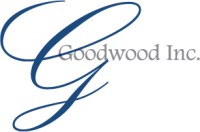Now’s the time to find returns with shareholder activism
Shareholder activism is one tool that can move a stock above bargain pricing faster than waiting for a market recovery.
Using GDP expectations to forecast corporate earnings is one of the many gauges of how much a market will return for the year. By this measure, 2016 isn’t looking good.
Currently, the three-month Treasury yield, less core inflation, trades below 0% and GDP per capita has fallen each decade since the 1960s. So, if cash yields and economic growth are at all-time lows, how can investment advisors generate required rates-of-return in the equity market without pushing their clients into risky securities?
Conventionally, academics and investors measure risk by the volatility or unpredictability of asset returns. However, we use the probability of loss, or the probability of returns falling below our required rate of return, to measure risk. And we attempt to control the risk, or probability of loss, through shareholder activism.
The early-2016 market sell-off has been especially punitive to smaller-capitalized companies, as panic-driven investors have continued selling their shares. It’s an opportunity for buyers who are willing to get involved in the companies they purchase, but a familiar investing adage says, “A bargain isn’t a bargain if it stays a bargain.”
Shareholder activism is one tool that can move a stock above bargain pricing faster than waiting for a market recovery.
There are two types of activism we prefer: the first is when an activist shareholder buys into an undervalued company and makes suggestions to management and the board about how to maximize shareholder value. The second, more aggressive, type is particularly relevant in today’s investing environment. Here’s how it works.
Since there’s been a significant market correction, you can more easily find a small-cap stock that’s trading below liquidation value. In this scenario, the activist takes full control of the board, appoints new management, sells assets and uses the resultant cash-rich corporate entity to pursue opportunities with greater potential profit. For example, the company could attract private companies exploring options for going public. For those companies, a reverse takeover can be much less risky than pursuing an IPO.
As another example, we purchased a 19.9% interest in common shares of Westaim at a price-per-share of less than one-third of its book value during the 2008 crisis. We gained two seats on the board, were soon appointed to management and initiated a plan to convert all of Westaim’s assets to cash. One year later, Westaim was trading above book value and partnering with the Alberta Investment Management Corporation to raise $265 million of new equity to finance an acquisition of JEVCO insurance, a P&C insurance company, for a price below tangible book value. In 2012, Westaim received a bid from Intact Financial to sell JEVCO for $530 million cash, or 1.38 times the net book value. On closing, Westaim distributed substantially all of the net proceeds by way of return of capital to shareholders, which generated an approximate total return of 262% to date. Now, Westaim is an investment company that specializes in providing long-term capital, primarily to global financial services businesses. We still hold a seat on Westaim’s board.
So, how much will the equity market return to investors in 2016? No idea. But, there are plenty of special opportunities to generate significant wealth if you are prepared to co-invest with a shareholder activist.
Curt Cumming is president of Goodwood, a Toronto-based investment management firm.
